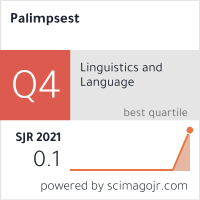WHAT DIDACTIC APPROACHES FOR THE SOCIOCULTURAL CONTENT TO TEACHING FRENCH AS A FOREIGN LANGUAGE?
DOI:
https://doi.org/10.46763/PALIM21116273scAbstract
The function of sociocultural content in teaching French as a foreign language is closely related to the conception of culture in didactics of foreign languages. Didactics of foreign languages develops two kinds of conception of culture: as an explicit phenomenon, which can be observed; as an implicit phenomenon of the order of lived experience. Basing on those two conceptions of culture, didactics of foreign languages proposed different approaches of sociocultural content since the development of the communicative methodology. Recent French as foreign language textbooks still propose those approaches. However, the problematic of approach of sociocultural contents also relates to the ends of culture in French as a foreign language and to its relations with the language content. The recent evolution of French as a foreign language teaching seem to move towards a symbiosis between both contents as reflect the most recent textbooks.
Keywords: culture, French as a foreign language, French language textbook, intercultural, methodology, sociocultural.


